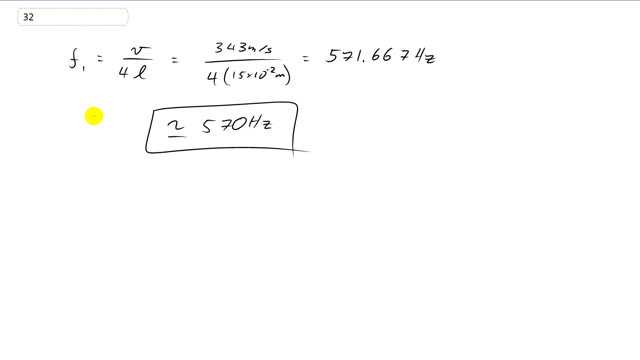
Estimate the frequency of the “sound of the ocean” when you put your ear very near a 15-cm-diameter seashell (Fig. 12–35).


In order to watch this solution you need to have a subscription.
This is Giancoli Answers with Mr. Dychko. When you put your ear at the opening of a seashell what you're hearing is whatever frequency happens to resonate in that seashell, and the sound is coming from the room that you're in just, you know, every room has certain background noise in the room, you know, whatever, devices and people walking by or whatever. And some of those noises will resonate in the seashell and become louder and more apparent. And the particular frequency that does resonate is the one that fits such that it has a fundamental according to this formula where you have one end is closed and one end is open. So, the seashell, you know, it's a hard shell. So, one end is gonna be closed, and then the open end is the hole where you put your ear. And the fundamental frequency that resonates here is going to be v over 4 times l. So, that's the speed of sound is the speed of this wave is propagating in here because this is a sound wave in here because it's full of air. So, it's 343 meters per second divided by 4 times the length of the seashell, 15 times 10 to the minus 2 meters. And that gives about 570 hertz is the fundamental around which this sort of resonant frequency is centered. And that's going to be the sound of the sea that you hear when you put your ear to the shell. Now, you don't hear this one distinct tone because, of course, the sound of your hearing is the result of background noise and which is going to be broad spectrum and it's going to have lots of different frequencies but this will be the most obvious one and so that's where you'll perceive to be the fundamental.